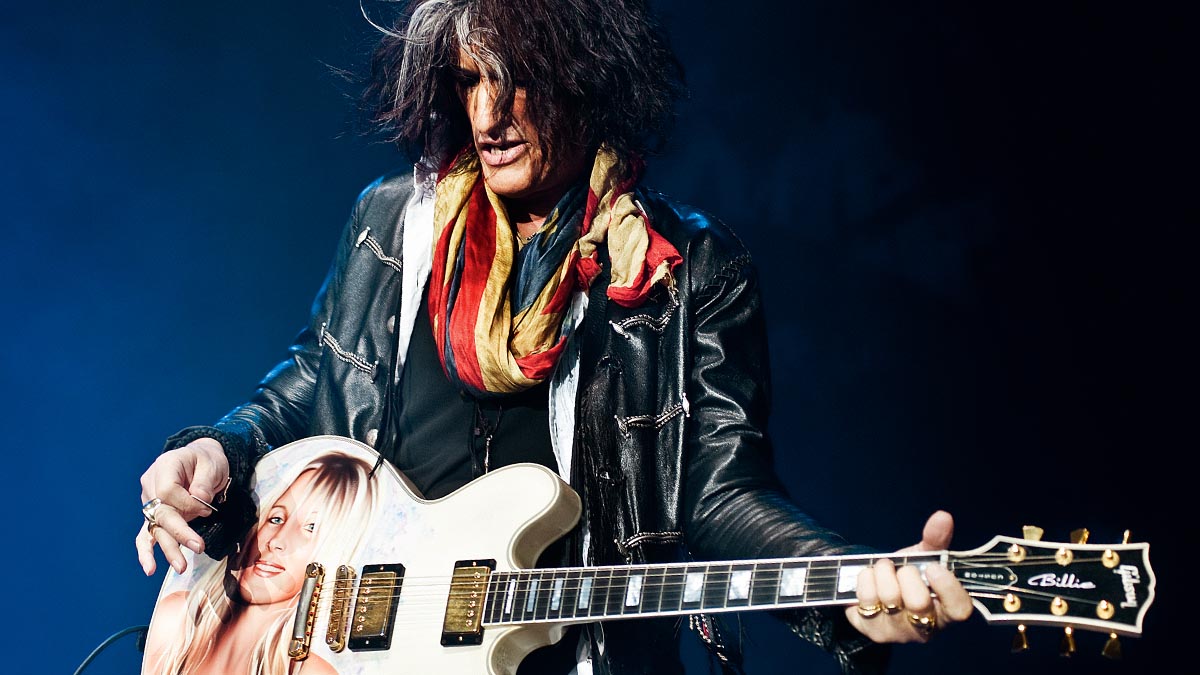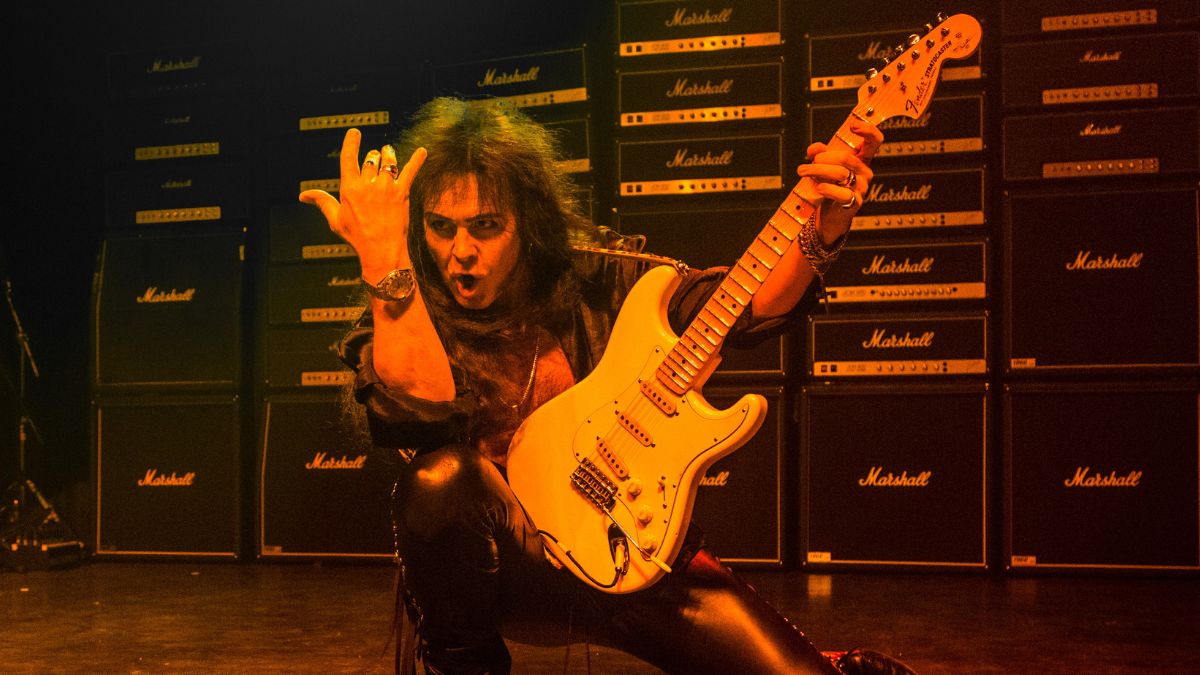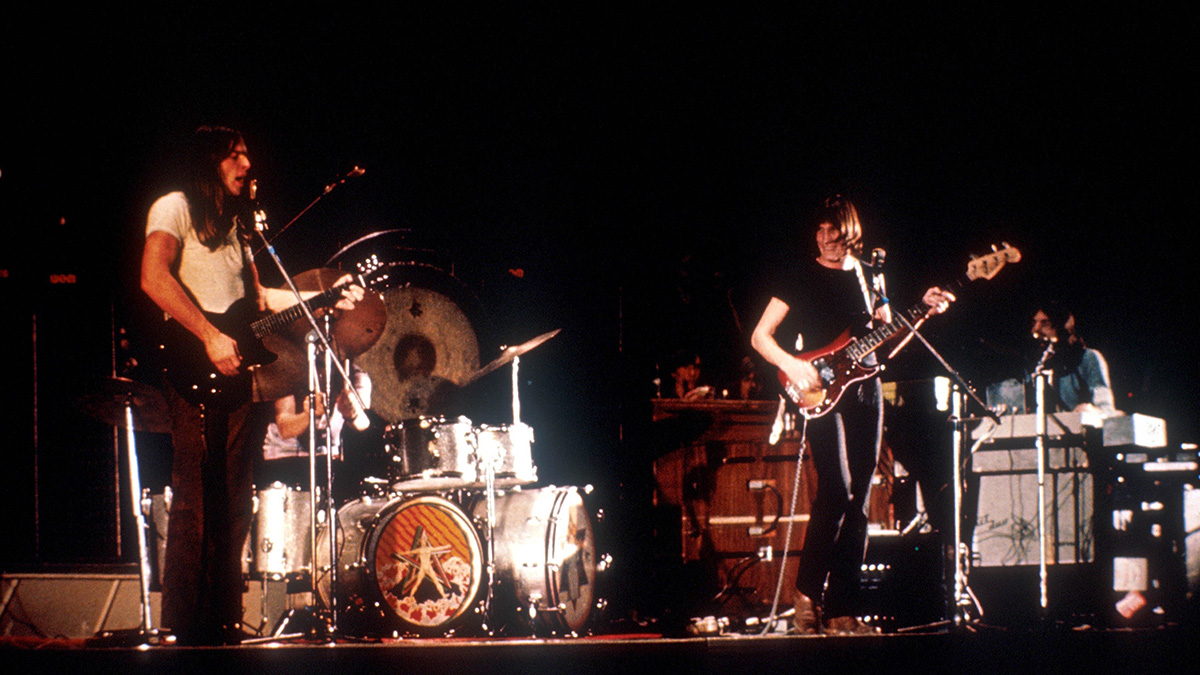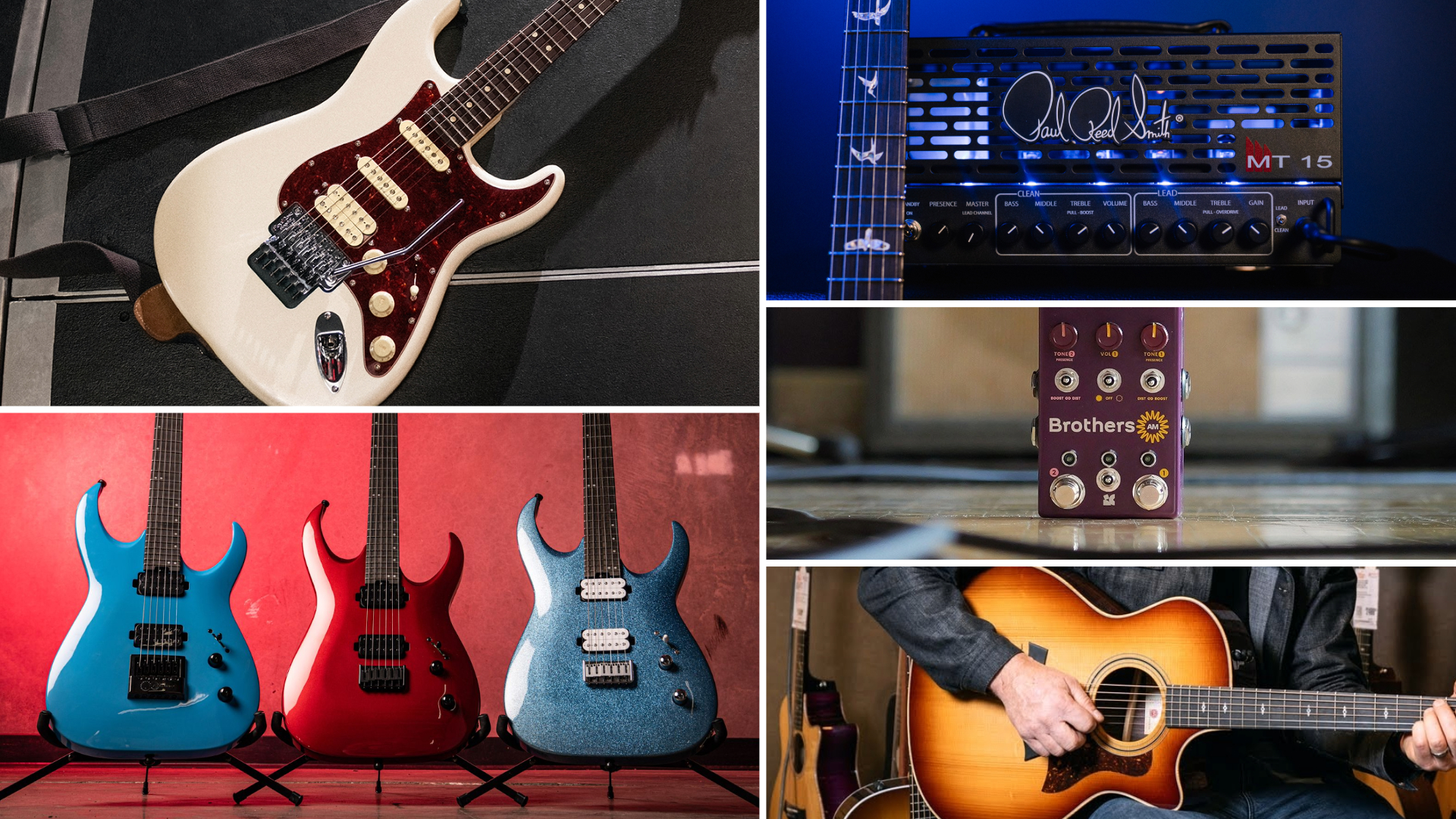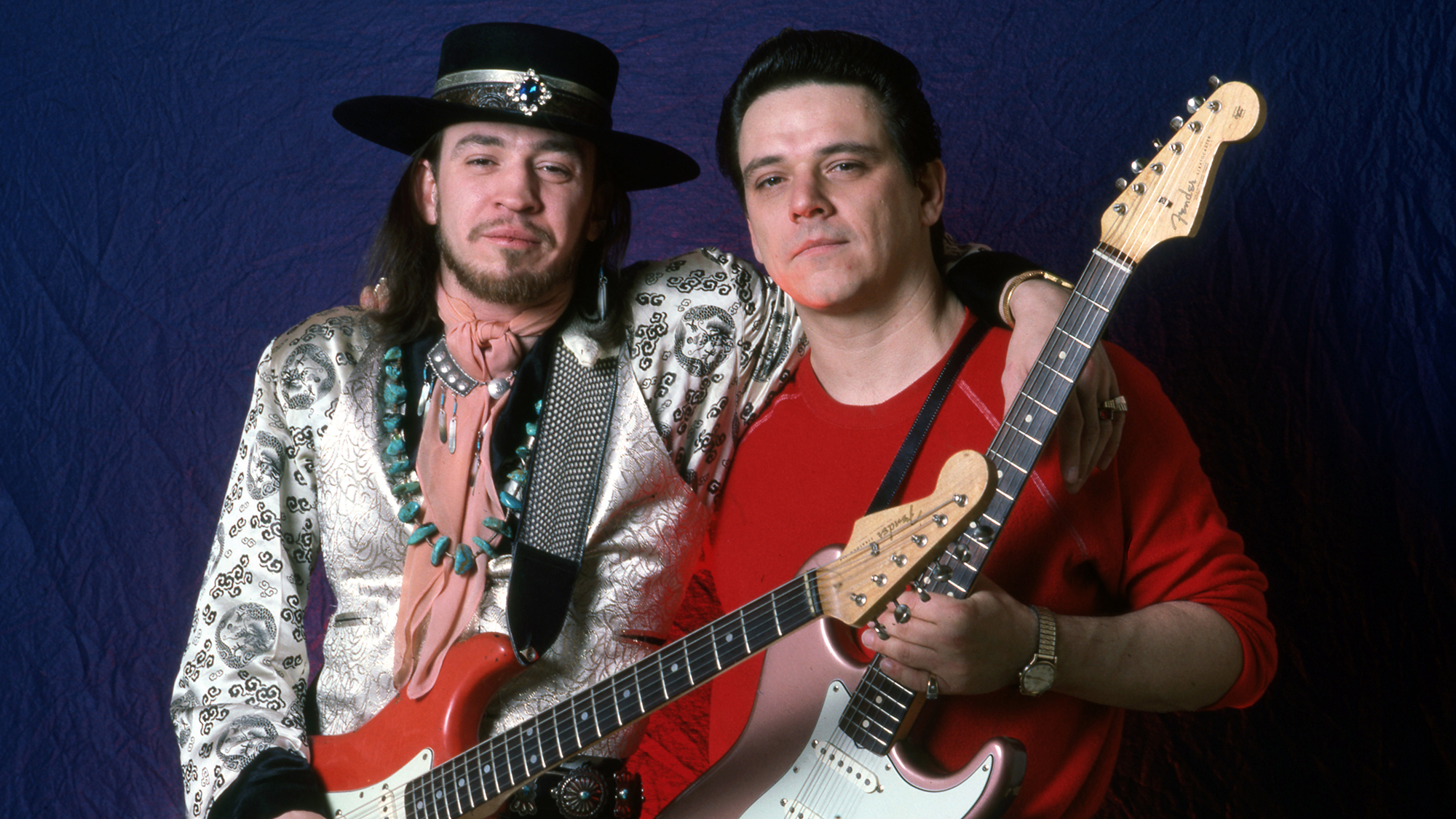Honoring George Harrison: Randy Bachman's Track-by-Track Breakdown of New Album, 'By George, By Bachman'
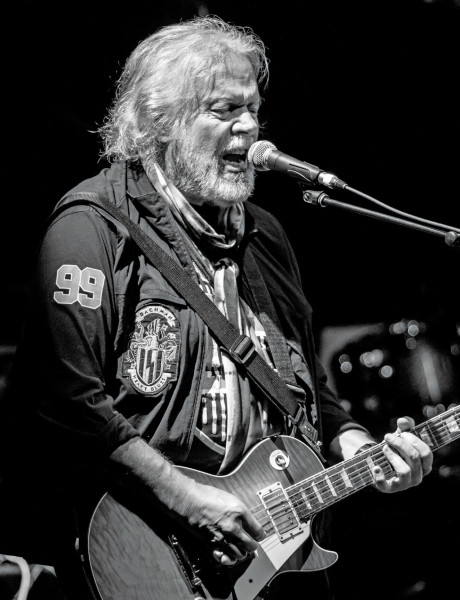
Before he found fame with the Guess Who and Bachman-Turner Overdrive (BTO), guitarist Randy Bachman cut his teeth playing in cover bands around his Canadian home town of Winnipeg. This was where his lifelong admiration of George Harrison crystallized.
“I was always the George Harrison guy in every band I was in,” Bachman says. “The drummers in those bands got to sing Ringo’s songs and I was always delegated to sing George’s songs.”
Many decades down the road, Bachman decided to relive that experience on his new album, By George, By Bachman, a collection of 11 songs written by George Harrison with one track, “Between Two Mountains,” that Bachman wrote as a tribute to the former Beatle, who passed away in 2001. Had he lived, Harrison would have turned 75 this year, and Bachman celebrates his own 75th birthday this September 27. So the timing seemed ideal to Bachman, who takes a very freehanded approach to Harrison’s compositions on the disc, departing markedly from the original chord progressions, melodies and grooves. But he feels that Harrison would have approved.
“In four or five short years, the Beatles took us from ‘yeah, yeah, yeah’ to ‘I Am the Walrus,’ ” Bachman says. “Every single they released was really different from any of their previous hits. They took you on a journey. Because of that, I felt it would be okay to take some of George’s songs in a bunch of different stylistic directions. I’ve had my own songs covered by everyone from Lenny Kravitz to the Red Hot Chili Peppers. At first, I’d say, ‘Why?’ But after a while, I realized they had to reinvent the songs in order to be able to perform them. So that’s what I did with George’s songs—as a tribute to him as a songwriter.”
On the eve of his current tour in support of the album, Bachman took time to guide Guitar World through each of the tracks on By George, By Bachman.
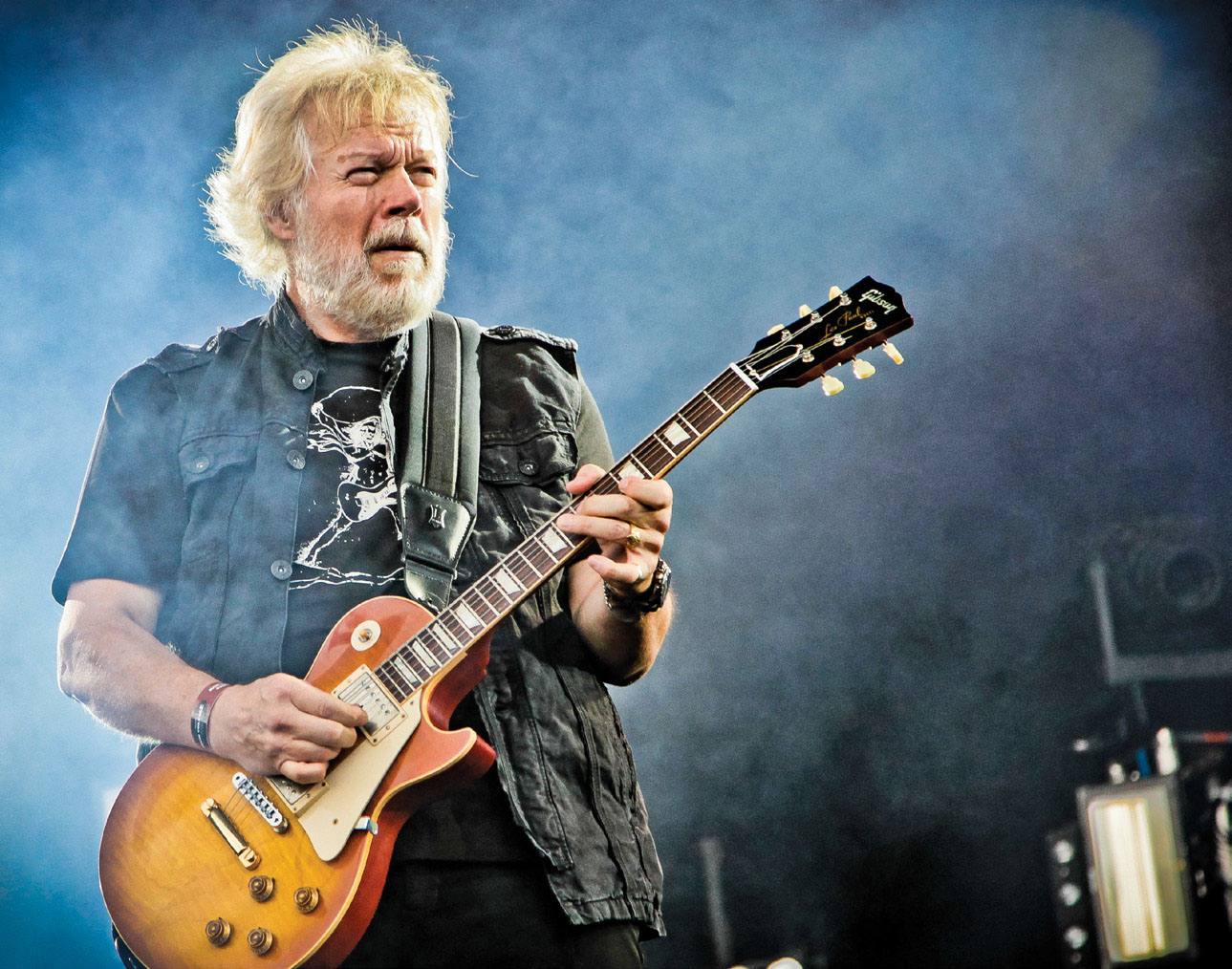
"Between Two Mountains"
“As we got through with recording, I felt like I needed one song of my own on the record. So I wrote ‘Between Two Mountains,’ which reflects how George must have felt in the Beatles. The two mountains are John Lennon and Paul McCartney, these two amazing songwriters who wrote most of the Beatles’ material. George would get only one or two songs of his own on every album. But from that, he grew into his own mountain.
Get The Pick Newsletter
All the latest guitar news, interviews, lessons, reviews, deals and more, direct to your inbox!
“When I was writing this song, it was three o’clock in the morning and I felt there was something in my room—a ghost, a presence, whatever. I found myself guided by this invisible thing into my music room, and I started writing down lyrics on my laptop that are like nothing I’ve ever written before, with phrases like ‘an inner light’ and ‘angels in flight.’ It was like these lyrics were coming from the ghost of George Harrison. I thought, Wow, I gotta make sure my music fits this.
“The sitar sound in the intro was done with an old four-string Gretsch tenor dobro that I have. I loosened the strings so I could bend notes like a sitar.
“We got the tamboura drone off the internet.”
"If I Needed Someone"
{1965} THE BEATLES
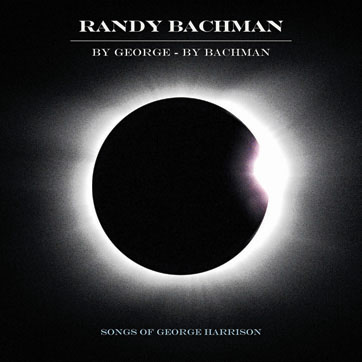
“A lot of the arrangements on this record were built off loops in Garage Band. So up comes this hip-hop/acid jazz kind of loop and I go, ‘That’s incredible.’ But it’s tied to a keyboard part that I can’t separate out, and the keyboard is just playing two chords. So I just tried singing George’s vocal line over these two chords and it becomes this cool thing. I sent it to my drummer and co-producer, Marc La France, who put these real high-pitched vocals on top of my vocal. We made it this real Earth Wind & Fire thing, where everybody wants to sing along. But it still sounded kind of empty. That’s why I put some jazzy guitar chords on there. There’s not a lot of guitar on the track, but when I do a jazz lick, it really hits you in the face.”
"You Like Me Too Much"
{1965} THE BEATLES
“I saw the Gypsy Kings two nights in a row, and I thought they were really incredible. So I went home with that on my mind and started to write a song. But the song seemed incomplete somehow. So I thought I would try ‘You Like Me Too Much.’ Tack it in there and make a new song out of it. So I played this intro that I wrote, which is like a Gypsy Kings kind of flamenco guitar part that I played on a nice 12-string guitar. And all of a sudden I started singing the first line of George’s song, and it fit absolutely perfectly.”
"While My Guitar Gently Weeps"
{1968} THE BEATLES
“I didn’t want to use the original chords. Although they’re wonderful, how can you outdo Eric Clapton, who played on the original track with George Harrison? So I said, ‘I’m just going to powerhouse this out.’ It’s a really great vehicle for guitar solos. I had my good friend Walter Trout come in and solo with me in the outro. He comes in and it’s like Hendrix has landed in the studio. Then I come in halfway through and play a slow, Clapton kind of thing. Then we both rock out for the last minute. It brings tears of joy to my eyes. Playing together was quite incredible. We’ve both always admired each other’s playing, and we’ve both had some serious health issues. So we come near the end of ‘Guitar Gently Weeps’ and I figure, Here’s two guys who should have been dead. We’ve died a couple of times between us and have been resuscitated, and here we are rocking our faces off.”
"Handle with Care"
{1988} THE TRAVELING WILBURYS
“I wanted to represent George’s whole career on this album, and this is a great song from his time in the Traveling Wilburys. I stuck close to the original chord progression on this one. Because there are so many lyrics, it became hard to change things around. I just doubled the tag line, ‘handle with care.’ The overall feel of our track was inspired by seeing Chrissie Hynde open for Stevie Nicks. Chrissie is just incredible; she still looks and sounds as great as always. That show stuck in my head, and I thought, This is a great way to do the Wilburys song. Brent Knudsen from my band played some great George Harrison–style slide guitar on it. And we end with that Beatles sixth chord from the end of ‘She Loves You.’ Because some of the arrangements are very different from the original, I tried to work in a lot of little riffs and musical quotations from George’s and the Beatles’ music.”
"Taxman"
{1966} THE BEATLES
“I could have done the original riff. So many others have. But I just wanted to get away from that. I wanted to do it fast, like a shuffle. I thought, I’m just gonna get this thing and hammer it out and see if I can sing ‘Taxman’ over it. At one point, the riff dropped out by accident and there’s just drums when I sing the first line, ‘Let me tell you how it will be.’ And then the riff comes back in. I go, ‘Wow, great arrangement!’ Things like this just happened on this project. I let it flow. I felt some sort of distant, cosmic energy coming to me in the studio.”
"I Need You"
{1965} THE BEATLES
“There are certain musical templates that people recognize instantly. One is the way I did ‘I Need You.’ The minute it starts, you go, ‘Oh, that’s like Led Zeppelin—John Bonham.’ In my drum loop library, there’s one called ‘Bozo,’ which is like ‘Bonzo,’ which is John Bonham’s nickname. I pulled that up and started putting some AC/DC guitar chords with it. I tried singing the first line of ‘I Need You’ over it and it fit perfectly. In the chorus, the band comes in with the harmonies. So it’s kind of Beatles-esque in a way. It was just really fun doing the Beatles heavy.”
"Something"
{1969} THE BEATLES
“I really like the guitar tone I got for this one. I played a 1959 reissue Les Paul that Gibson sent me about eight or nine years ago. It looks just like my original 1959 Les Paul that I played on ‘American Woman’ and all those classic tracks. But that guitar was so heavy I stopped playing it onstage. It’s now at the museum in Calgary [Canada’s National Music Centre] for safekeeping. But the reissue has a chambered body, which makes it lighter. And it still sounds great. I put a Bigsby on it, because my original Les Paul had a Bigsby. And that’s what I’m playing on ‘Something.’
“I wanted this to sound like Robin Trower, who I really love and was one of my touring acts when BTO started in the Seventies. It was Rory Gallagher, Robin Trower, ZZ Top and Peter Frampton. So I wanted to get a real cool Robin Trower sound, kind of like ‘Bridge of Sighs.’ And this museum in Calgary has gone around the world collecting gear. They really have everything. So I said to them, ‘Get me an old Univibe.’ I combined that with two specially modded Roland blues pedals [Boss BD-2 Blues Driver] that I have. A guy in Florida modifies them for me with military components, which gives the pedals eight to 10 percent more oomph and sustain. So I plugged into those pedals through a Fender amp, and that’s that sound. The Univibe is on a real slow speed, and you can hear I’m using my Bigsby a little on that.”
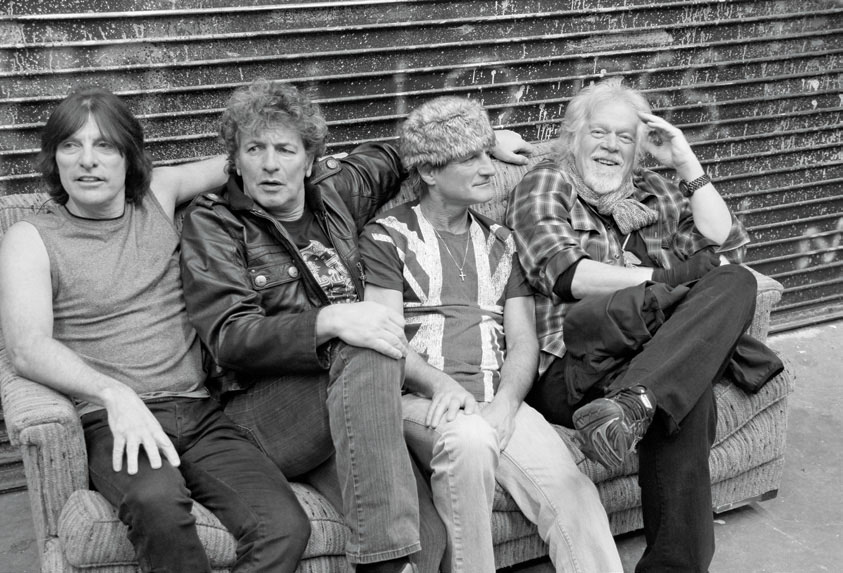
"Think for Yourself"
{1965} THE BEATLES
“The Beatles’ original recording of ‘Think for Yourself’ was the first record to have a fuzz bass on it. I wanted to honor that in my version, but I also wanted to get that sound on guitar rather than bass. So I put my Les Paul through a Roland octave pedal to make it real fat and heavy. It’s the same sound I used on ‘Taxman.’ ”
"Here Comes the Sun"
{1969} THE BEATLES
“This song is so bright and happy, but it doesn’t have a whole lot of lyrics, and the Beatles’ version isn’t very long. I wanted to make it into something longer, and I said, ‘There’s nothing that really honors reggae on this album. We’ve got Indian sounds and kind of raga stuff, so I’m just going to try a reggae thing. And I’m going to take the song’s D major and make it a D minor.’
“So you play a D minor on the second fret and take off your first finger, so you get a different chord. You’ve got an open E string, instead of an F. And then I got to my next chord, which is a D major 7 and do the same thing: play the chord, leaving the E string open. Then G minor, A7, and I go, ‘Wow, this is something.’
“I played it for my band, and they sang over it, which gives it a Beatles persona for the ‘it’s alright’ part. So it really honors the song but puts it in a different suit of clothes.”
"Don’t Bother Me"
{1963} THE BEATLES
“This is one of George’s earliest songs, and we stuck close to the original chord progression and melody, but we sped it up quite a bit. I played my rhythm guitar with an octave pedal on it to make it real heavy. That was the cool thing.”
"Give Me Love (Give Me Peace on Earth)"
{1973} GEORGE HARRISON
“This track from George’s solo career was the first song I worked on for the project. I took ‘Give Me Love,’ which has a zillion chords, and made it into a three-chord power thing like the Who doing ‘I Can See for Miles,’ and sent it to my band. That started a correspondence back and forth between Vancouver and Toronto: ‘Wow, this is great. How about trying this song, and that song?’ I played my original 1959 Les Paul on this one, the ‘American Woman’ guitar. We went over to the Calgary museum and got it out. I just plugged it in and played it with whatever strings they had on it. I worked in a riff from Wonderwall Music, the soundtrack album George did in 1968.”
"Between Two Mountains"
REPRISE
“I wanted to bookend the album between the two ‘Mountain’ songs, and put George between the two, like he was between Lennon and McCartney. How it worked out was happenstance. A lot of it gave us chills—made the hair on our arms stand up on end.”
In a career that spans five decades, Alan di Perna has written for pretty much every magazine in the world with the word “guitar” in its title, as well as other prestigious outlets such as Rolling Stone, Billboard, Creem, Player, Classic Rock, Musician, Future Music, Keyboard, grammy.com and reverb.com. He is author of Guitar Masters: Intimate Portraits, Green Day: The Ultimate Unauthorized History and co-author of Play It Loud: An Epic History of the Sound Style and Revolution of the Electric Guitar. The latter became the inspiration for the Metropolitan Museum of Art/Rock and Roll Hall of Fame exhibition “Play It Loud: Instruments of Rock and Roll.” As a professional guitarist/keyboardist/multi-instrumentalist, Alan has worked with recording artists Brianna Lea Pruett, Fawn Wood, Brenda McMorrow, Sat Kartar and Shox Lumania.





